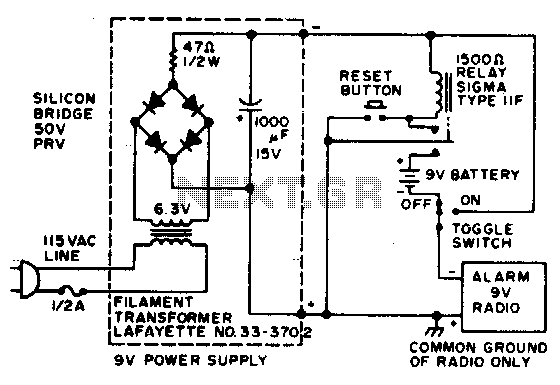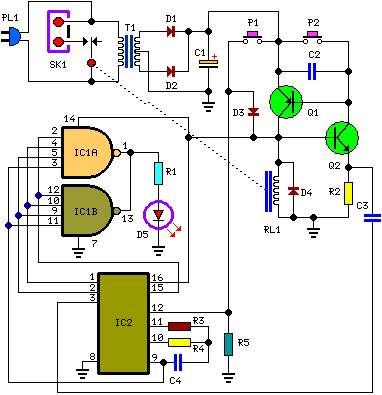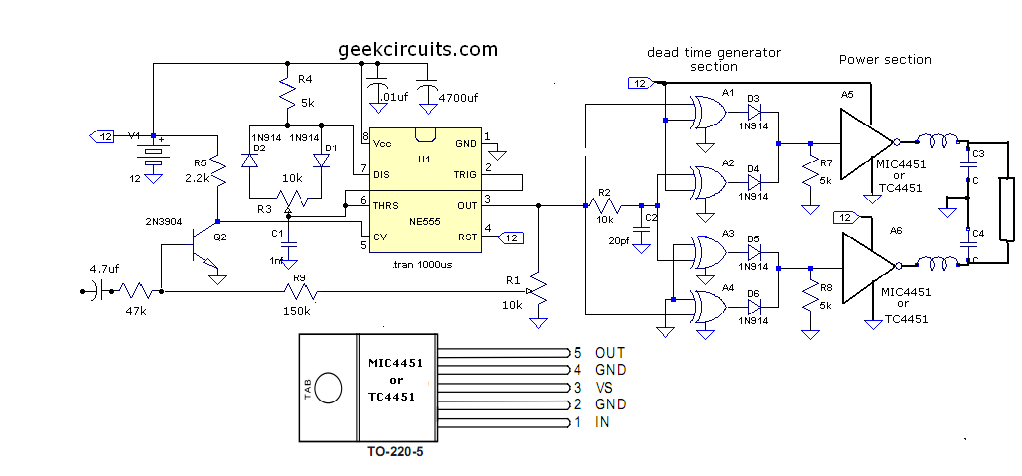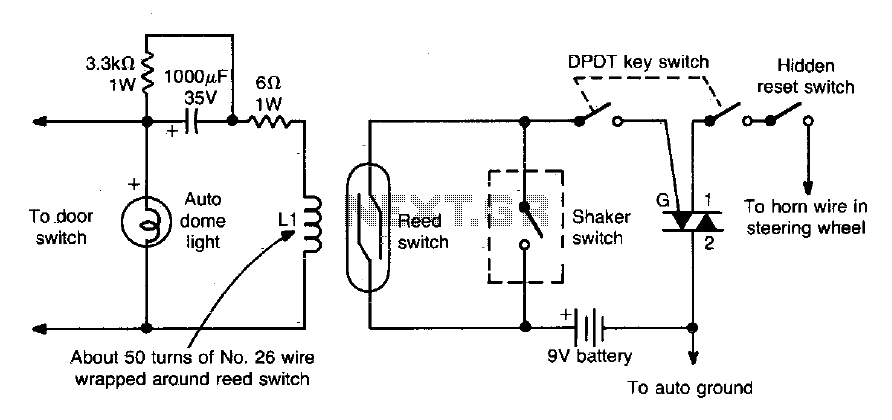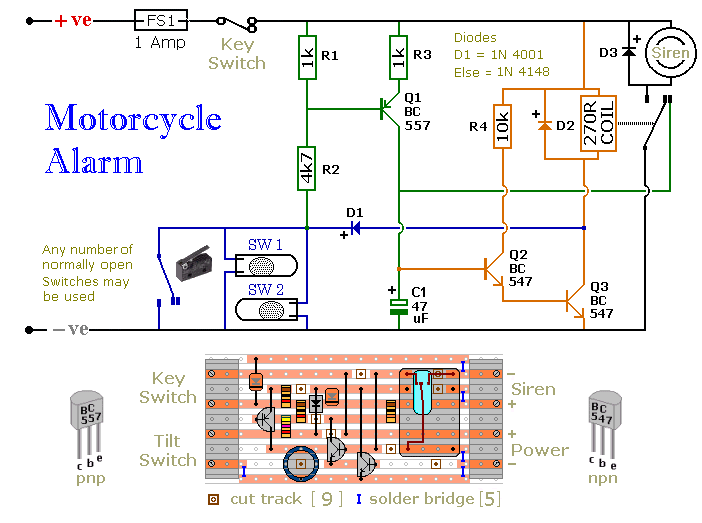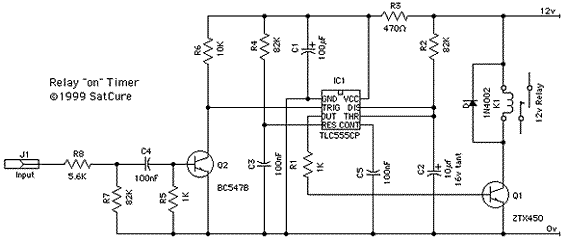
Timer with alarm
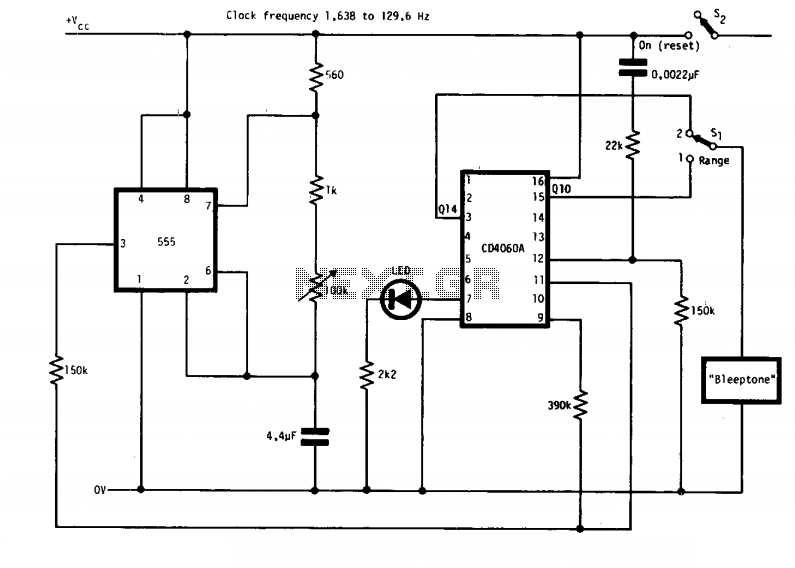
The circuit features two timing ranges: from 10 seconds to 5 minutes and from 1 minute to 80 minutes. It is powered by a 9-V battery. An LED is connected in a manner that allows for a consistent flashing frequency across the operational range. The circuit can be reset by closing switch S2.
The described circuit is a timer that operates within two distinct time ranges, providing flexibility for various applications. The first range allows timing from 10 seconds to 5 minutes, suitable for short-duration tasks, while the second range extends from 1 minute to 80 minutes, accommodating longer timing requirements.
Powering the circuit with a 9-V battery ensures portability and ease of use, making it ideal for applications where access to mains power is limited. The LED serves as a visual indicator of the timer's operation, flashing at a frequency that is consistent regardless of the selected timing range. This feature enhances user feedback, allowing for easy monitoring of the timer's status.
The reset functionality provided by switch S2 is critical for the operation of the circuit. When S2 is closed, the timer resets to its initial state, allowing the user to start a new timing cycle. This ensures that the timer can be reused for multiple tasks without the need for manual intervention or disconnection from power.
In terms of component selection, the circuit may include a timer IC, resistors, capacitors, and the LED. The timer IC is responsible for generating the timing intervals based on the chosen range, while the resistors and capacitors will set the timing characteristics. The circuit design should account for the LED's forward voltage and current specifications to ensure proper operation without exceeding the component ratings.
Overall, this timer circuit design is efficient, user-friendly, and versatile, making it suitable for various timing applications in both hobbyist and professional settings.The circuit has two ranges: 10 sees to 5 mins and 1 min to 80 mins. It can be powered by a 9-V battery. With the LED connected as shown a reasonable frequency of flashing occurs throughout the range of operation. This circuit is reset when S2 is closed.
The described circuit is a timer that operates within two distinct time ranges, providing flexibility for various applications. The first range allows timing from 10 seconds to 5 minutes, suitable for short-duration tasks, while the second range extends from 1 minute to 80 minutes, accommodating longer timing requirements.
Powering the circuit with a 9-V battery ensures portability and ease of use, making it ideal for applications where access to mains power is limited. The LED serves as a visual indicator of the timer's operation, flashing at a frequency that is consistent regardless of the selected timing range. This feature enhances user feedback, allowing for easy monitoring of the timer's status.
The reset functionality provided by switch S2 is critical for the operation of the circuit. When S2 is closed, the timer resets to its initial state, allowing the user to start a new timing cycle. This ensures that the timer can be reused for multiple tasks without the need for manual intervention or disconnection from power.
In terms of component selection, the circuit may include a timer IC, resistors, capacitors, and the LED. The timer IC is responsible for generating the timing intervals based on the chosen range, while the resistors and capacitors will set the timing characteristics. The circuit design should account for the LED's forward voltage and current specifications to ensure proper operation without exceeding the component ratings.
Overall, this timer circuit design is efficient, user-friendly, and versatile, making it suitable for various timing applications in both hobbyist and professional settings.The circuit has two ranges: 10 sees to 5 mins and 1 min to 80 mins. It can be powered by a 9-V battery. With the LED connected as shown a reasonable frequency of flashing occurs throughout the range of operation. This circuit is reset when S2 is closed.
